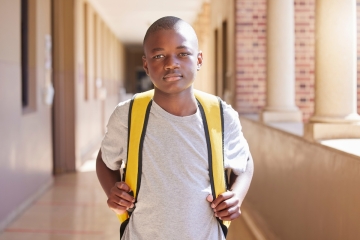The third iteration of the Education Recovery Scorecard, compiled by Harvard’s Center for Education Policy Research, was released hot on the heels of 2024 NAEP test scores and is an invaluable supplement to that dismal data. The Scorecard is specifically looking for evidence of recovery from pandemic learning loss at the district level and—unfortunately—does not find much.
To get a picture of how schools are or are not bouncing back, the Center uses score results from NAEP math and reading exams, plus state assessments administered to roughly 35 million fourth- and eighth-grade students across forty-three states in 2019, 2022, and 2024. The analysts then connect these data to findings from their previous report on federal pandemic relief funding and national data on chronic student absenteeism (gathered by AEI’s Nat Malkus) to see how each has impacted those recovery goals.
The 74’s Kevin Mahnken sums up the scorecard’s findings most starkly: “More than five years after the first appearance of Covid-19 on American shores, 94 percent of elementary and middle schoolers live in districts that still have not returned to pre-pandemic levels in math and reading.” Overall, students have fallen further behind than where they were in 2022 and the average student today is still six months behind in both core subject compared with children in the same grades in 2019.
These negative findings are more pronounced in districts serving higher proportions of lower-income and racial/ethnic minority students. In math, for example, the disparity in scores between students in affluent and low-income districts has grown by 11 percent since the start of the pandemic, and the disparity in scores between students in predominantly non-minority versus minority districts has grown by 15 percent. Even within districts, the average racial/ethnic disparities in math scores have grown by 7 to 12 percent since 2019. That is, even the small pockets of positive growth observed are in higher-income and majority-white districts. The same gaps have grown in reading, as well, but not by quite as much.
As to funding, each dollar of federal relief was shown to improve student achievement by about as much as a general revenue increase—approximately 0.008 of a standard deviation per $1,000 spent. And while that is precious little bang for the buck, the analysts are sure that outcomes would have been far worse without it. It is also clear that what districts bought with the money mattered even more than the amount. In California, where the most-detailed expenditure data were available, student achievement grew more in districts that spent their funds on academic interventions, such as tutoring or summer school, versus districts that spent on more general items like staffing or facilities.
Chronic absenteeism, predictably, exerted a drag on student achievement, although the correlation was less direct. While AEI’s data show the chronic absenteeism rate has declined from its peak in 2022, it remains 8 percentage points higher than immediately before the pandemic. The rise in absenteeism was widespread, occurring in both high- and low-income districts. However, the increases were larger in low-income, high-poverty districts and in districts which had high absenteeism rates before the pandemic.
Fortunately, it’s not all gloom and doom. The data show that there are over 100 school districts that have fully recovered from pandemic learning loss. The analysts took an in-depth look at several of them, including Ector County, Texas (where leaders used $7 million to reward outstanding teachers for becoming “master teachers” and showing improvements in student learning), and Natchitoches Parish School District in Louisiana (where leaders replaced ineffective curricula with a science of reading-based program and retooled their instruction weekly based on student testing data). None of this means that these districts are necessarily doing everything right, of course, but getting back to square one is a prerequisite for any further improvement. Those that have done so should be examined and lauded.
The scorecard report concludes by highlighting four priority items that could help more districts, schools, and students recover from Covid learning loss. These are (1) continuing to fund—by any means necessary—proven, high-quality academic catch up efforts that now-exhausted federal funding kickstarted; (2) making a full-court press to reduce chronic absenteeism, specifically by enlisting local leaders, employers, and community members in the effort; (3) consistently and clearly informing parents about their child’s progress (or lack thereof) toward on-grade-level achievement and offering easy access to any available remediation programming; and (4) expanding reforms that are working, like the science of reading and high-quality curricula, to other states who have yet to join the party.
Millions of American students have graduated or otherwise left school since the coronavirus pandemic closed their school buildings five years ago. That damage is no longer the province of K–12 education to remediate. But millions more are still here, and their sisters and brothers are coming up behind. We owe them nothing less than to learn from past mistakes, end the harm, and commit every resource to actively repairing their educational paths and launching them to further and better academic achievement.
SOURCE: Daniel C. Dewey et al., “Education Recovery Scorecard: Pivoting from Pandemic Recovery to Long-Term Reform,” Center for Education Policy Research (February 2025).




